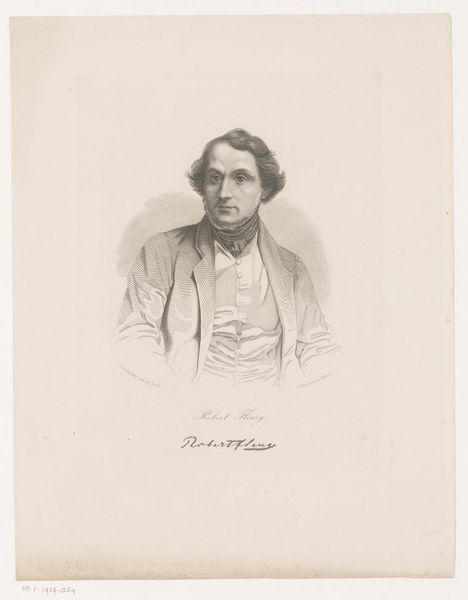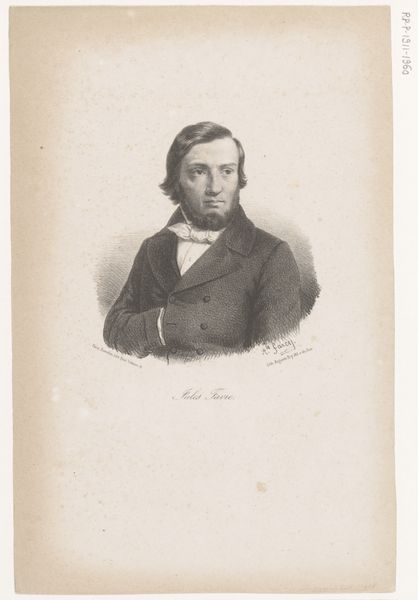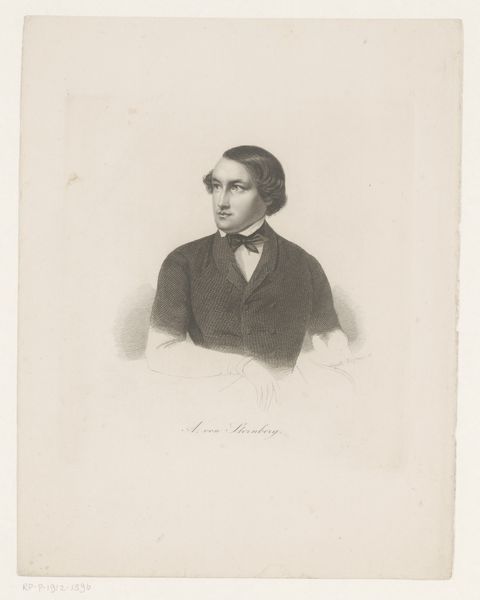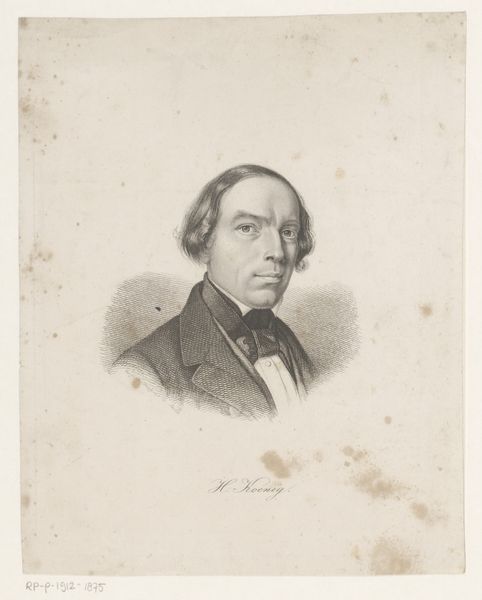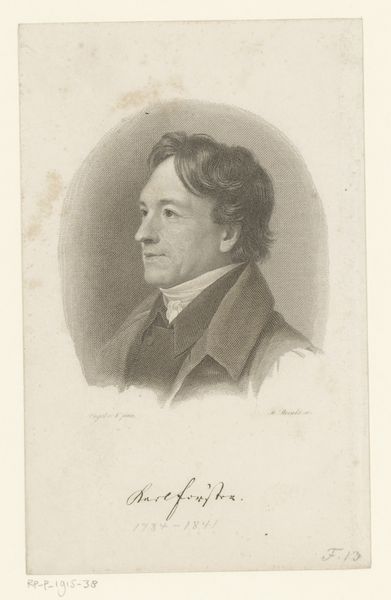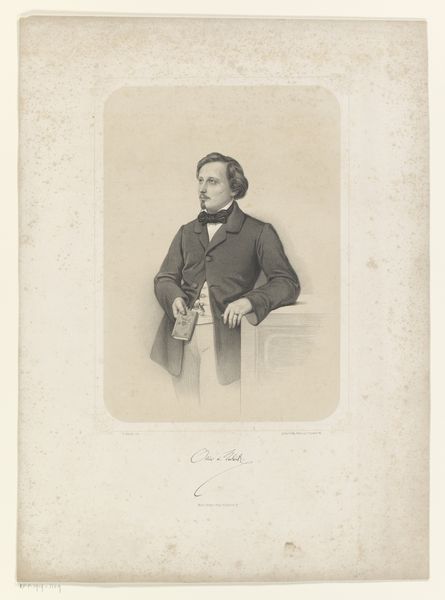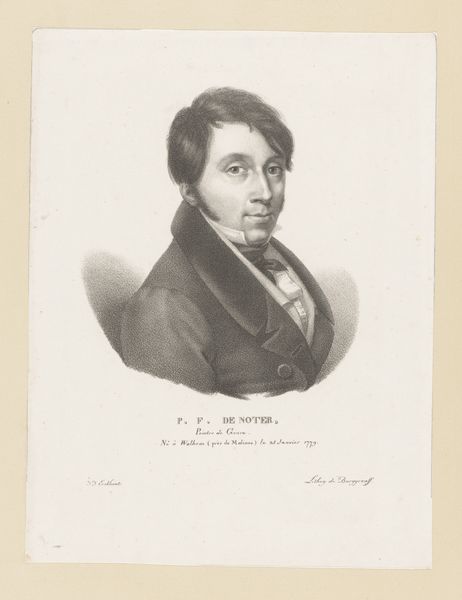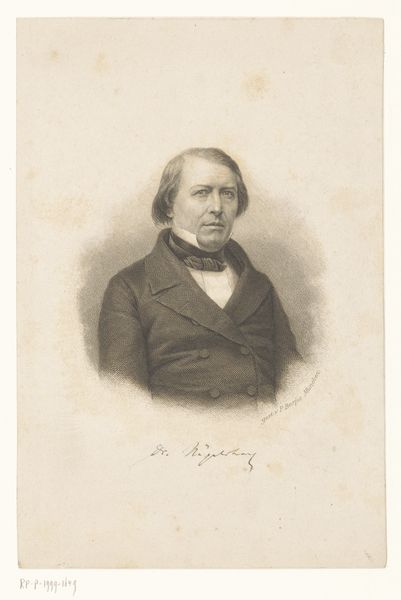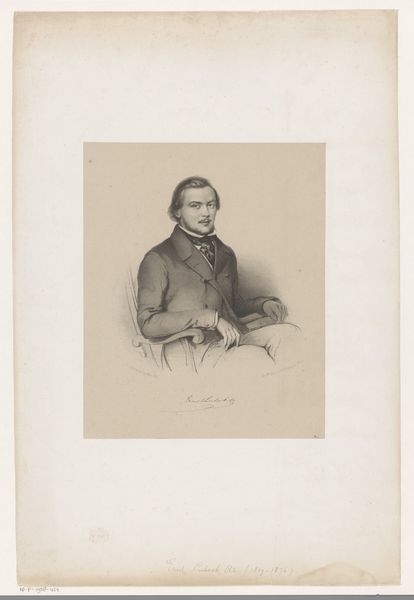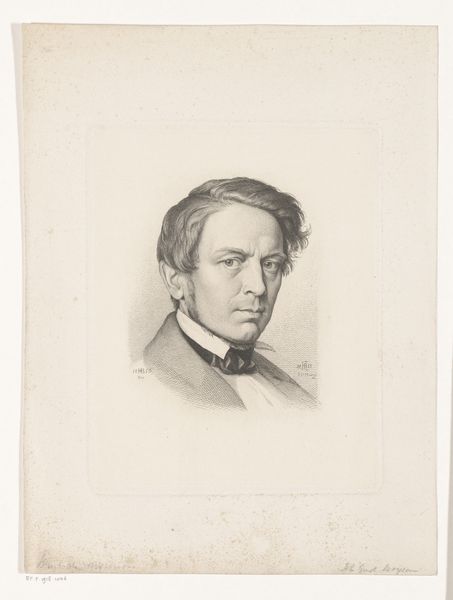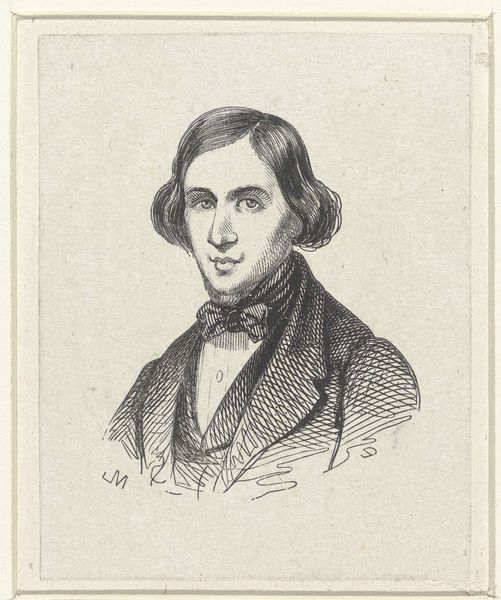
Fotoreproductie van een geschilderd portret van Robert Schumann door Ernst Hader 1870 - 1900
0:00
0:00
Dimensions: height 265 mm, width 192 mm
Copyright: Rijks Museum: Open Domain
Curator: This gelatin-silver print, dating from around 1870 to 1900, presents a photographic reproduction of Ernst Hader’s painted portrait of Robert Schumann. Editor: It’s immediately striking how this image embodies a feeling of intense introspection, a very Romantic melancholy. The soft focus only enhances the wistful mood. Curator: Exactly, the image speaks volumes about how the cultural reception of Schumann became enshrined. Photography had, by this time, democratized image production, allowing broader audiences to connect with representations of cultural heroes. This one specifically serves to solidify Schumann's persona as a pensive, romantic figure. Editor: Do you think the print medium itself impacts the perception? Curator: Absolutely. Gelatin-silver prints were affordable and reproducible. It speaks to a desire for widespread distribution of a particular image—to literally disseminate and instill Schumann’s image within a broader social consciousness. Editor: Looking at the original painting, it’s easy to discern a difference in the clarity and even sharpness of details, the expression in his eyes is even different in the reproduction. What cultural function does idealizing a composer through such reproductions perform? Is it about memorializing genius, or controlling a specific image? Curator: I think it does both simultaneously. Reproductions allow wider access to the image, ensuring it imbeds in the collective memory. But also, in softening features or perhaps subtly idealizing the subject's visage, a certain reverence gets amplified. Consider the social milieu in which these images were consumed; to possess and display an image of Schumann was almost akin to declaring allegiance to a certain cultural sensibility. Editor: Fascinating how these photographic reproductions shape lasting public perceptions of an artist like Schumann. Curator: It gives us a tangible glimpse into the machinery of how fame and cultural memory were manufactured and distributed, even at this relatively early stage of photographic technology. Editor: It is definitely a moment in the public reception of classical composers to which more people should give attention. Curator: Absolutely, it enriches how we engage with Schumann's legacy.
Comments
No comments
Be the first to comment and join the conversation on the ultimate creative platform.
